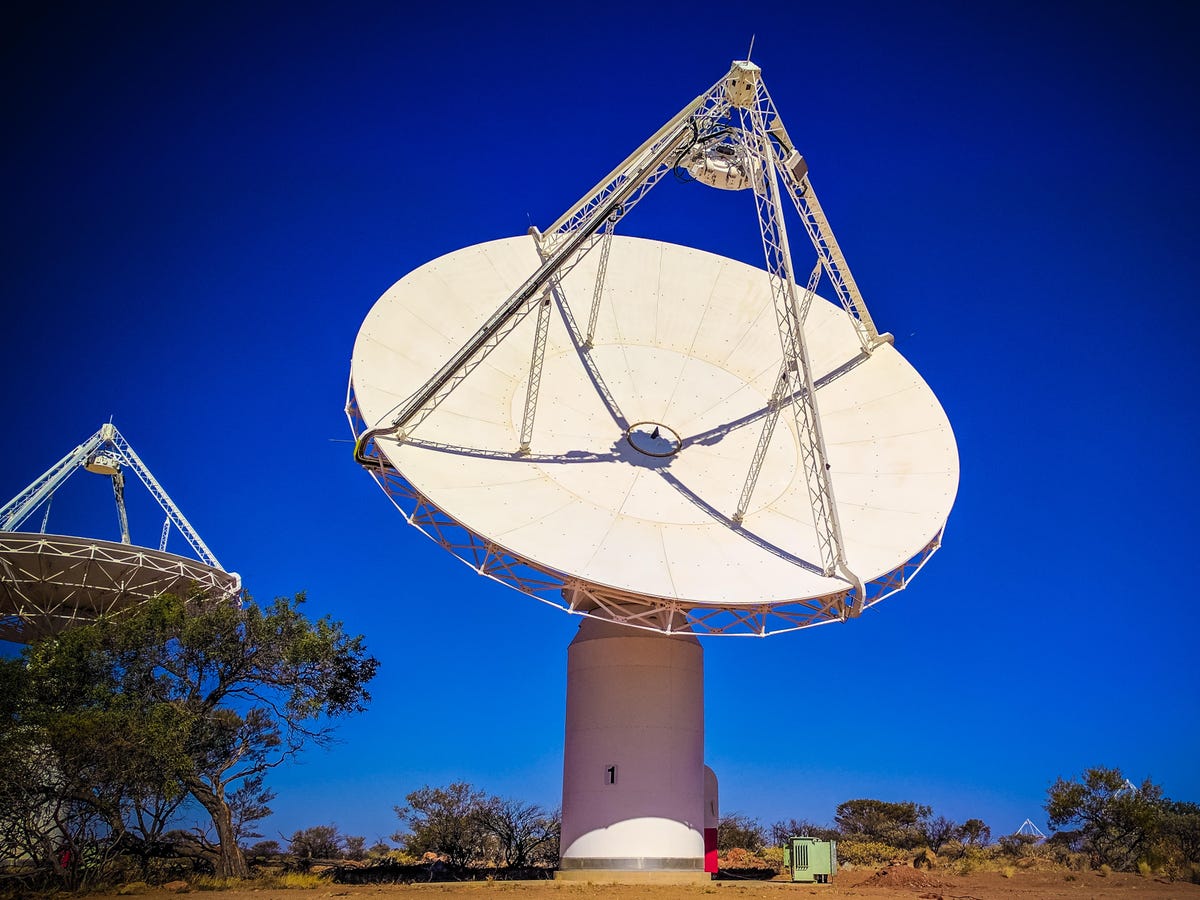Australia's desert radio telescope is the world's fastest
The Australian outback, arid and inhospitable, is where you'll find the Murchison Radio-astronomy Observatory, forging the way forward into the future.

Meet Bilyarli
Each of the Australian Square Kilometre Array radio telescope's 36 antennas are numbered, but they also have Wajarri Yamatji names, bestowed by the elders of the local Wajarri Yamatji community. Antenna 1's name is Bilyarli, which means galah, a pink and grey Australian parrot, and was also the name of a past elder.
Computing power
The Pawsey Centre in Perth is home to the most powerful supercomputer in the southern hemisphere. It's capable of 1,097 TeraFLOPS (1,000,000,000,000,000 calculations per second), and a capacity upward of 40 petabytes of data storage resources. The Murchison Widefield Array takes up over 10 of those petabytes, collecting and storing 8-10 gigabytes of data per day.
The centre is named after Australian radio astronomer Joseph Pawsey.
Technological throwback
Pawsey's data, like most (if not all) supercomputers, is stored on magnetic tape, like video and audio cassettes. This is because tape is actually a lot more efficient in terms of cost and power requirements than hard drives. The tapes are stored in banks, with a robot that moves among the stacks and selects the tapes for data retrieval.
Preparing for the future
The Square Kilometre Array Low Frequency Aperture Array (shortened to SKA-Low) will consist of over 256,000 dipole antennas, shaped a bit like a Christmas Tree with the electronics in a compartment at the top, and standing about 2 metres high. The frequency band they will operate in goes as low as 50MHz.
Material reality
Because so many of the SKA Low dipole antennas need to be made, they need to be relatively inexpensive to build, but also able to withstand the harsh environment of the Australian desert for several decades. The antenna itself is made from steel wire, while a cement base keeps it stable.
Surveying the early universe
The Murchison Widefield Array consists of 2048 knee-high dipole antennas, arranged in 128 grids of 4x4. This time lapse video of the sky above the MWA shows what the telescope "sees", compared to an optical view. Natasha Hurley Walker, who led the MWA's GLEAM survey, explained the visuals in a TED talk.
Minimal footprint
The Australian Square Kilometre Array Pathfinder, a mid-frequency interferometer, consists of 36 dish antennas over an area around 6 kilometres (3.7 miles) in diameter. However, the footprint of each antenna is quite small, causing minimal disruption to the local wildlife.
Accounting for size
Each dish is 12 metres (40 feet) in diameter, with a collecting area of 113 square metres (1,216 square feet). The total collecting area of all 36 dishes is 4,068 square metres (43,788 square feet).
Configuratively speaking
The configuration of the ASKAP dishes sees them clustered relatively closely together in the centre of the area, with the distances between them growing greater toward the edges of the circle. The cluster of antennas in the centre generates broader sensitivity, while the longer baselines between pairs of antennas allows for higher resolution.
A third axis
One of the key features of the ASKAP antennas is a three-axis movement. They have the standard north-south and east-west axes, as well as a "roll axis" or rotational axis that allows the dish to turn in place. This means that the beams formed by the phased array feed can remain fixed in place with respect to the sky during observation.
Increasing resolution
The circular object at the top of the antenna is the phased array feed. This is a device that creates 30 separate simultaneous beams with each receiver, which gives the antenna a very wide field of view of 30 square degrees. Each phased array feed, like the one you see here, has 188 receivers.
Innovative tech
ASKAP will be able to detect hundreds of times more galaxies than current radio telescopes, thanks to the phased array feeds and the three-axis movement.
Desert dust
The powdery red dust that clings to everything is called bulldust. It's also slightly acidic when damp, so electronics need to be coated in such a way that the dust can't destroy them.

Shhhhhh
Once you're past this sign, all electronics have to go off to avoid radio frequency interference. This is because such interference is detected by the antennas, and can confuse the data -- as was experienced by the Parkes Observatory in Australia with pesky microwave ovens.
Enabling airflow
These small honeycomb grilles allow air to enter the Faraday cage that encloses the MRO control centre without allowing radio waves to escape. This is because the low- and mid-frequency waves that are detected by the telescope antennas are too big to travel through the tiny tubes of the grille.

